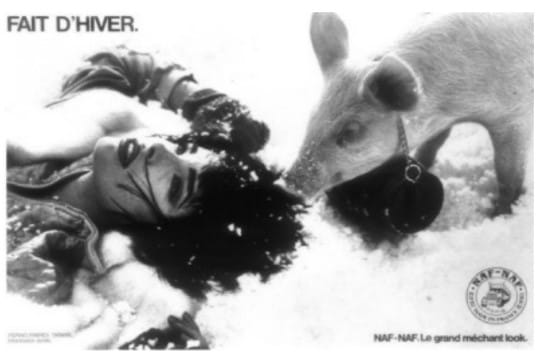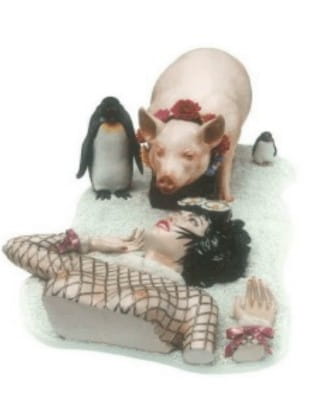French court finds against Jeff Koons in an IP infringement case
Headlines in this article
Related news and insights
Publications: 14 March 2024
Infringing gin part II: Court of Appeal victory for M&S against Aldi’s copycat design
Publications: 22 January 2024
UPC Insights: Divisions disagree on rules for service on non-European defendants
Blog Post: 04 January 2024
The EU Cyber Resilience Act proposal – What You Need to Know
Publications: 02 January 2024
Podcast: The power of synthetic media in advertising and mitigating risks from generative AI
Earlier this year, the Paris Court of Appeal was tasked with deciding whether a sculpture by Jeff Koons infringed a photographer’s copyright in a picture. In arguing that this was not the case, Jeff Koons presented a series of arguments ranging from the more standard (that the picture did not benefit from copyright protection and stressing the differences between the two works) to the more original (that the sculpture was a parody and that a finding of copyright protection would violate his freedom of expression). In the paragraphs below, we summarise how the Court responded to these arguments and how it reached its final decision.
The beginning of the story
Once upon a time in 1985, a photographer commissioned by Naf-Naf, a French brand specialising in the commercialisation of clothing and fashion accessories, staged the picture of a young woman lying in the snow being rescued by a piglet with a St-Bernard’s barrel tied to its neck. The words “Fait d’hiver” appeared in the top left-hand corner of the picture. The picture was published in several women’s magazines.

In 1988, world-renowned artist, Jeff Koons, created an earthenware sculpture titled “Fait d’hiver”, representing a young woman lying in the snow being rescued by a piglet with a St-Bernard’s barrel and flowers tied to its neck, plus two penguins.

The sculpture was put on display at the inauguration of the first ever European retrospective exhibition on Jeff Koons at the Centre Pompidou in Paris in November 2014. Two months later, the photographer initiated legal action against Jeff Koons, arguing that the sculpture infringed his copyright in the picture.
Originality – Is the picture a protected work?
Jeff Koons’s first line of defence was to argue that the picture was not an original work, seeing that copyright protection is only granted to original works. He claimed that the picture was a compilation of ideas of unsure origin and that it did not reflect the photographer’s personality. The Centre Pompidou, which was also a party to the proceedings, added that the elements of the picture were either ideas/clichés (such as the use of a piglet in a campaign for the Naf Naf brand, knowing that Naf-Naf is the name of one of the three piglets in a fairy tale), or common (such as the presence of a young woman in an advertisement for a brand with a female customer base).
However, the Court confirmed the first instance judgment that the combination of:
- the representation of a young woman lying in the snow (when such position is a priori uncomfortable);
- the representation of a pig in the snow (when such an animal is usually represented in hay);
- the presence of a Saint-Bernard’s barrel around the neck of the piglet (while this accessory is normally found around the neck of Saint-Bernard dogs, a species that is trained to rescue people from avalanches);
- the position of the body, the hands, the face, the hair and the makeup of the young woman; and
- the title “fait d’hiver” which is a word play evocating an incident (a “fait divers” in French) occurring during the winter (l’ “hiver” in French); reflected the personality of the author, conferring an original character to the picture.
Infringement – Did Jeff Koons infringe the photographer’s copyright?
Jeff Koons’s subsidiary argument was that the sculpture did not infringe the photographer’s copyright due to the differences between the two works and the different context of the works (one being an advertisement for a fashion brand, the other one being a piece of art with a specific message). The Court did not agree, recalling the principle that a copyright infringement should be assessed by comparing the similarities between the works. The Court decided that the similarities (the same young woman with the same expression and the same hair strand on the left cheek lying in the snow with her arms at the level of her face, the pig with the Saint-Bernard barrel in the same position next to the young woman) were predominant, meaning that the sculpture infringed the photographer’s copyright.
Parody – Were the infringements authorised under the parody exception?
With the Court having confirmed that Jeff Koons had infringed the photographer’s copyright, Jeff Koons tried to justify the infringement by relying on the parody exception.
The Court referred to the Deckmyn decision (C-6201/13) of the European Court of Justice (ECJ) in which the ECJ explained that “the essential characteristics of parody, are, first, to evoke an existing work, while being noticeably different from it, and secondly, to constitute an expression of humour or mockery” This led the Court to conclude that the sculpture was not a parody because: (i) the humour/mockery was not established, but most importantly, (ii) Jeff Koons could not establish his intent to make a parody when creating the sculpture and (iii) the picture had long been forgotten, meaning that the public would not have perceived that the sculpture was evoking the picture.
Freedom of expression – were the infringements justified by Jeff Koons’s freedom of expression?
Jeff Koons’s final argument was to claim that his sculpture was a piece of art with a message, and that the public’s interest in having that message conveyed to it outweighed the photographer’s private interests. Consequently, his right to freedom of expression as enshrined in article 10 of the European Convention on Human Rights would be breached if the Court found that he could not share his work with the public.
The Court did not agree. After having noted that the restriction to freedom of expression was provided for under French law (article L.112-4 of the Intellectual Property Code prohibiting adaptations or transformations of a work without the consent of the author), the Court reached the conclusion that the message conveyed by the sculpture fell within Jeff Koons’s artistic or creative freedom of expression and was neither of a political or public interest nature (the Court also noted, not without some irony, that Jeff Koons is known to be a gifted businessman). The Court therefore ruled that the enforcement of the copyright protection of the picture was an appropriate limitation to Jeff Koons’s creative freedom of expression.

